It’s no mean feat to survive in the Arctic. There are some, however, who have brought the skill to perfection.
In the course of evolution, northern species have developed a whole range of ingenious mechanisms and abilities, which help them thrive despite the cold and the dark. The adaptational virtuosity of the polar bear, which is most commonly associated with the northernmost edges of the Earth, serves as an excellent example. But don’t be deceived by appearances. There’s much more to the Arctic Champions League than the bears.
Even though Svalbard may seem to be mainly snow, ice and rock, this inhospitable land is home to about 170 vascular plant species, which are accompanied by mosses (non-vascular plants) as well as fungi, algae and lichens (which, technically speaking, are not plants at all). The number is, of course, pathetically small if you compare it, for example, to over a thousand species found in the primeval Białowieża Forest (a World Heritage Site straddling the border between Poland and Belarus), but – bearing in mind the harshness of Arctic conditions – we can say without exaggeration that Svalbard boasts an astonishing variety of plant life. As a result, the summer colours of the islands consist not only of countless shades of grey and brown, but also of a rich palette of green. From a distance, it’s hard to identify the species that colour the ground, but if the brownish-grey of the rocks is spattered here and there with thick blobs of uniform green you’re probably dealing with moss campion (Silene acaulis), a true warrior of Svalbard’s tundra.
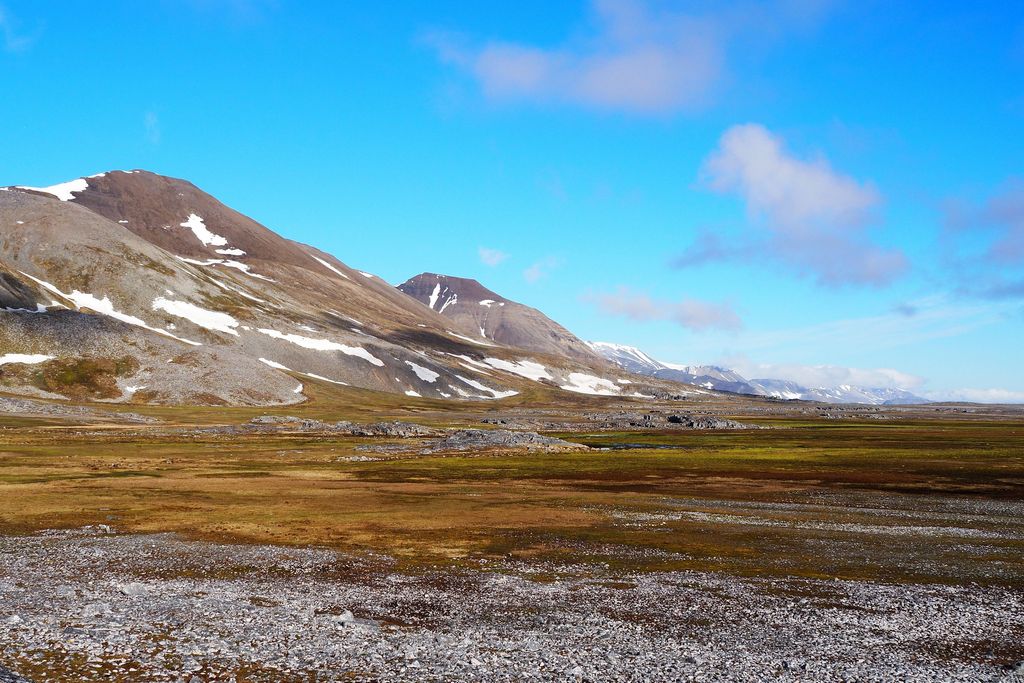
In the summer, Svalbard often amazes – and delights – with colours. © Barbara Jóźwiakn amazes – and delights – with colours.
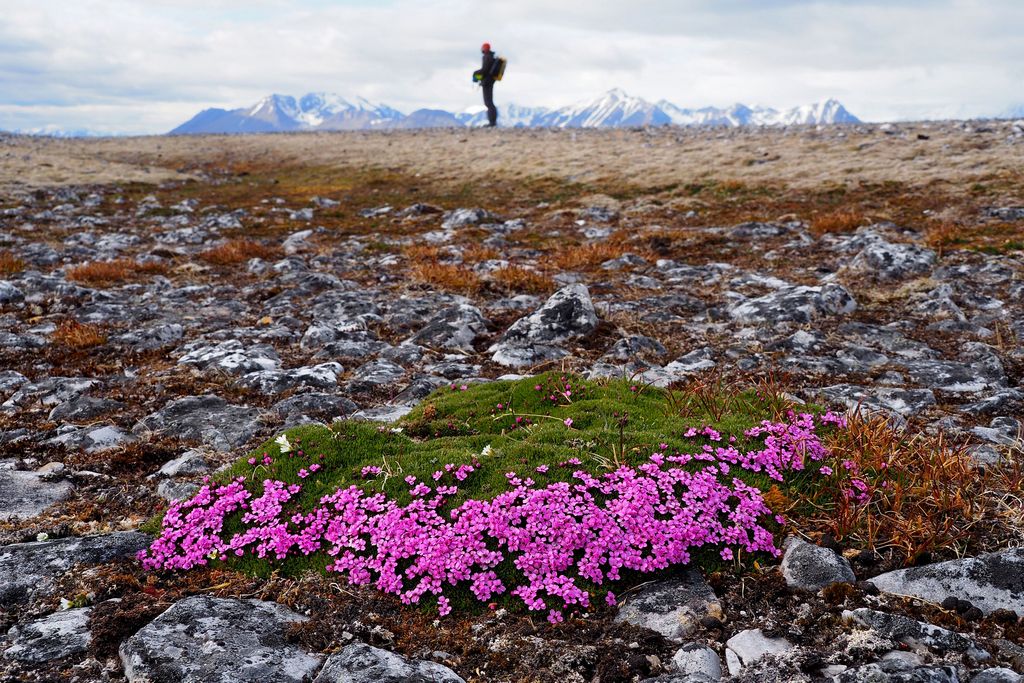
The characteristic cushions of moss campion (Silene acaulis) are a common sight even in the most inaccessible parts of Svalbard. © Barbara Jóźwiak
Moss campion is a perennial (or a long-lived plant with little or no woody growth), closely related to the popular carnation. Its common name is a misnomer, as moss campion is not a moss. And while its cushion does indeed have a somewhat mossy look to it, actual mosses are by definition non-flowering plants and moss campion is definitely no such thing. Despite its rather inconspicuous appearance, moss campion is as tough as they get, scornful of the comforts of the temperate zone. It is found solely in the far north and the high-mountain regions of North America and Eurasia. With a bit of luck, you may also come across it in the Polish Tatras. It enjoys challenges posed by rocky, nutrient-poor ground, and if it’s really bothered by anything, it will be too little light and too much heat. It may seem, therefore, that the barren wasteland of Svalbard, bathed in the cool brilliance of the polar day is everything moss campion could ever ask for.
Like all tundra plants, moss campion keeps small, forming densely packed cushion-shaped tussocks. Their middle part may reach, at best, 10 cm in height, while the edges closely hug the ground. Each cushion is anchored to its spot with a single tap root, which grows straight down and – in favourable circumstances – may be over a meter long. This type of root is an adaptation, which minimizes the risk of damage due to the so-called frost heaving, or the dynamic tension in the ground caused by repeated freezing and unfreezing. The cushion-like shape is no coincidence either. A low dome, covered on the outside with a thick layer of small, evergreen leaves shields the plant from the wind and constitutes a key component of the internal heating system, which grants moss campion a place in the Arctic Champions League. Due to the plant’s compact form, its dead parts are not blown about by the wind, but accumulate within the cushion, creating an insulating effect and protecting stems and buds from the elements. In the summer, the cushion soaks up and holds in the sun’s energy so effectively that, despite the surrounding chill, the temperature inside may reach even 30°C. What is more, the density of the cushion prevents excessive water loss through evaporation, which is also highly relevant as – due to low precipitation and high winds (which have a strong drying effect) – Svalbard is practically a desert. It’s worth pointing out, however, that moss campion is not the only plant to have discovered and reaped the benefits of a cushion-like form. The same idea has been hit upon by over 300 various, often completely unrelated species, which are found worldwide, from New Zealand through Tierra del Fuego to – as you already know – Svalbard. The form is an excellent example of the so-called convergent evolution, or a process whereby unrelated organisms independently evolve analogous traits in response to similar environmental stimuli. It is also clear proof that in severe conditions the form of a tight cushion really pays off.
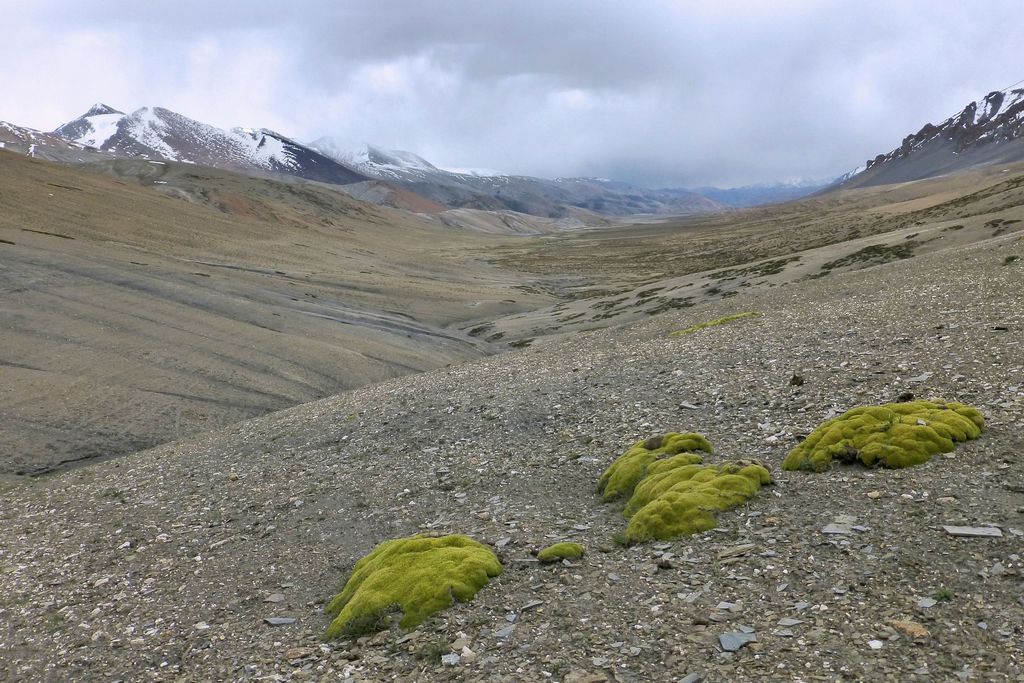
A cushion-shaped moss campion lookalike found in the high mountains of Ladakh, northern India, at the altitude of over 5000 m. © Barbara Jóźwiak
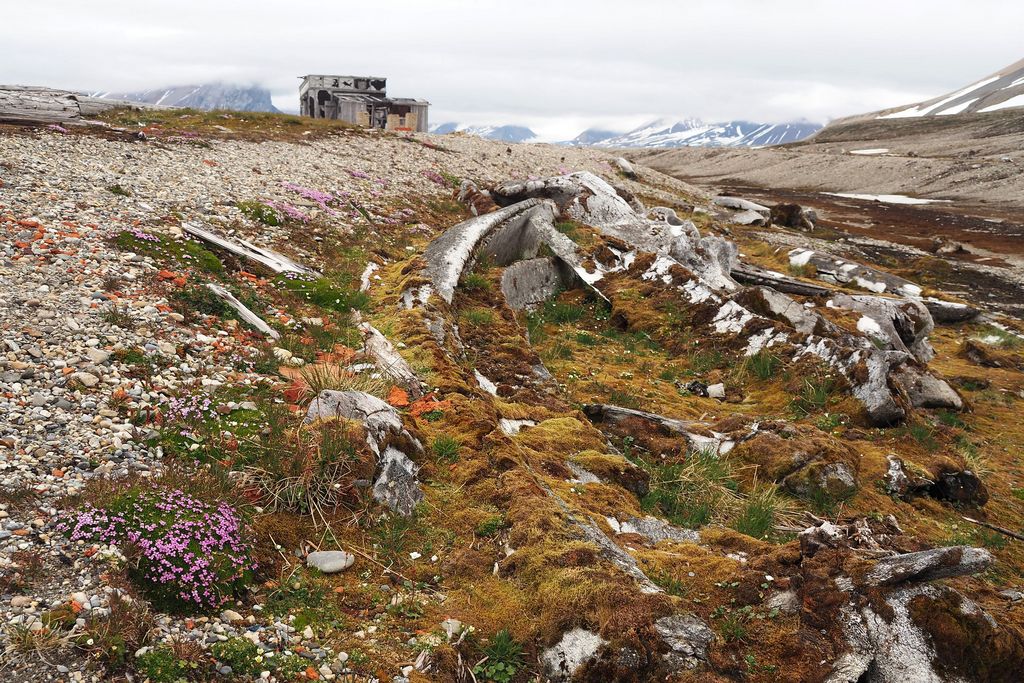
A concentration of blooming moss campion near the bay of Gåshamna in southern Spitsbergen. How many individuals can you make out? © Barbara Jóźwiak
The internal temperature and humidity control system makes it possible for moss campion to extend the growing season, which is the part of the year when local conditions enable plant growth and development. What makes the skill important is the fact that, while in most parts of Poland the growing season lasts for over six months, in Svalbard it is usually no more than 60 days. As a result, plants grow at a rate which makes the glaciers flowing unhurriedly in a distance seem like speed demons in comparison. For an individual moss campion, an annual growth of a single centimetre is an extraordinary achievement and there are years when the plants actually shrink. Even the most briskly developing new moss campion plants need at least a decade to flower and many fall victim to the elements before this happens. If they do come into bloom, however, it usually means that they have finally reached the critical size which sets their internal support system going. For moss campion, it’s the first step into adulthood and at the same time – a ticket to longevity, which is greatly boosted by the indifference moss campion is regarded with by Svalbard’s herbivores. Studies of the moss campion population in Wrangell-St. Elias National Park in Alaska suggest that cushions measuring 15 cm in diameter are, on average, 200 years old, and the oldest known specimen has been around for 350 years! It is quite likely, therefore, that the moss campion plants delighting tourists and scientists who make it to Svalbard nowadays, go back to the Pomors, who hunted within the archipelago in the 18th and 19th centuries. So, out of respect for your elders, avoid stepping on moss campion plants, because – although remarkably resilient – their cushions are not indestructible and making a full recovery after being trampled may take them a very long time.
Let us return, however, to the topic of flowering, because – like so many things in this astonishing plant – it also deserves attention. Due to tight deadlines imposed by the short duration of the growing season, moss campion produces flower buds in autumn. Tucked in the evergreen foliage, they hibernate through the long polar winter and, come spring, transform into tiny purple starlets, whose colour attracts insects and absorbs the sun’s warmth. This way moss campion’s flowers boost the activity of its central heating system and speed up the process of seed ripening. The angle at which the sun’s rays hit the ground, however, makes the cushions heat up unevenly. As a result, instead of having the buds open all at once, moss campion blooms in sections, with the flowers gradually “moving” from the southern to the northern side of the plant in sync with the circling sun. And even though each particular starlet dies in about a week, the plant as a whole is in bloom for a whole month, which is an excellent strategy in the land where pollinating insects are few a far between and the most efficient of them, such as bees and bumblebees, are totally absent. And this brings us to yet another trick which helps moss campion survive the hardships of polar life. Depending on the situation and current needs, particular cushions – which produce male, female or hermaphrodite flowers – may change their gender from year to year. Although the mechanism is not yet fully understood, it’s quite clear that the changes affect the quality of flowers, pollen and seeds. We may, therefore, assume that by adjusting its gender to the circumstances, moss campion maximizes the efficiency of its own reproduction.
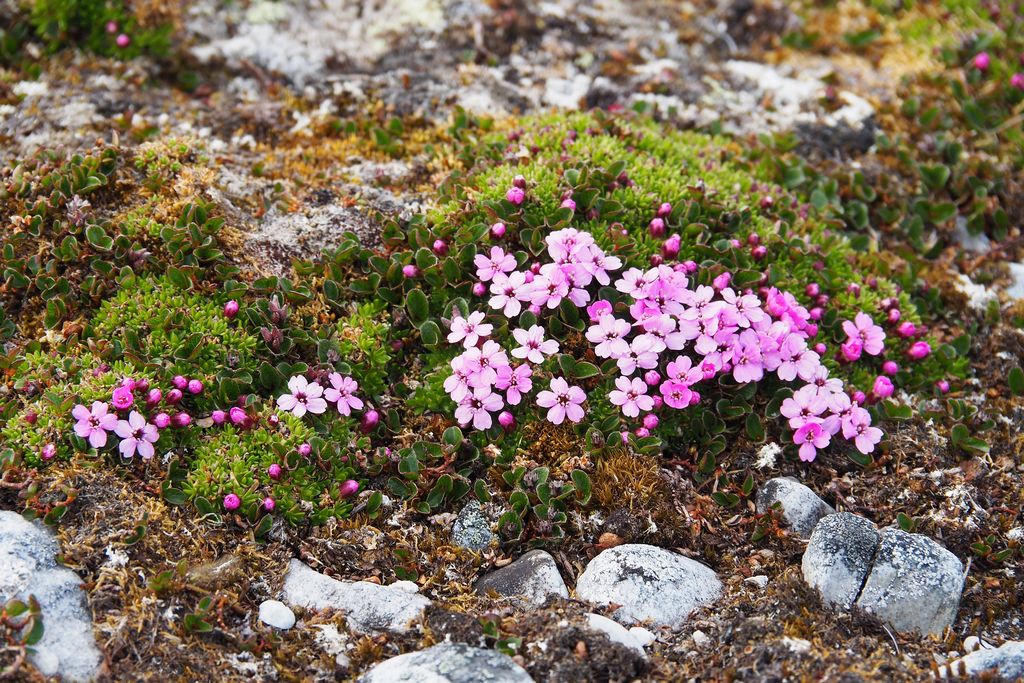
Moss campion cushions often shelter other Arctic species. In this case, sticking out from under the plant’s protective canopy is the polar willow (Salix polaris). © Barbara Jóźwiak
The characteristic way of blooming earned moss campion the name of a compass plant and the affection of ancient explorers, who used it to find their way in the wild. The species is also very much liked by other representatives of Svalbard’s flora. Why is that? Because it helps them survive in harsh conditions. Research demonstrates that the benign microclimate which moss campion creates within its cushion constitutes a protective environment for less hardy Arctic plants, which substantially increases biodiversity in the most hostile areas. Moss campion is, at the same time, a pioneer species, which means it’s the first to colonize inhospitable habitats, paving the way for others. In Svalbard, it is particularly visible at abandoned coal piles, left over after the closure of local mines, where moss campion initiates the ecological succession, playing an important role in the revegetation of areas destroyed by human activity. And although the process will no doubt take many decades, moss campion seems to be in no hurry. What’s left for us to do is not get in its way and hope that – despite concern voiced by scientists – climate change won’t get in its way either.
Text and photograps: Barbara Jóźwiak
Sources:
Alatalo, J. M. (1997) Gender lability in trioecious Silene acaulis (Caryophyllaceae). Nordic Journal of Botany, vol. 17, issue 2, pp. 181-183, https://doi.org/10.1111/j.1756-1051.1997.tb00307.x
Alatalo, J.M., Little, C.J. (2014) Simulated global change: contrasting short and medium term growth and reproductive responses of a common alpine/Arctic cushion plant to experimental warming and nutrient enhancement. SpringerPlus 3, 157, https://doi.org/10.1186/2193-1801-3-157
Antonsson, H., Björk, R.G., Molau, U. (2009) Nurse plant effect of the cushion plant Silene acaulis (L.) Jacq. in an alpine environment in the subarctic Scandes, Sweden. Plant Ecology & Diversity, 2:1, 17-25, https://doi.org/10.1080/17550870902926504
Association of Arctic Expedition Cruise Operators (2019) Vegetation guidelines: Arctic plant life [blog post], https://www.aeco.no/guidelines/vegetation-guidelines/
Doak, D.F., Morris, W.F. (?) Life and times of tundra plants: how long do they live and how they are responding to climate change. National Park Service, https://www.nps.gov/articles/aps-v12-i1-c3.htm
Kim, A. (2019-10-01) How do cushion plants survive in the tundra? [blog post] https://www.theburningofrome.com/advices/how-do-cushion-plants-survive-in-the-tundra/
Lee, Y.K. (2020) Arctic Plants in Svalbard. In: Arctic Plants of Svalbard, pp. 39-83. Springer, Cham. https://doi.org/10.1007/978-3-030-34560-0_4
Murray, A., Bradshaw, P. (2016) Earth’s greatest spectacles, Episode 2: Svalbard [TV documentary], https://www.dailymotion.com/video/x4cvpq4
Oh, M., Lee, E.J. (2021). Cushion plant Silene acaulis is a pioneer species at abandoned coal piles in the High Arctic, Svalbard. Journal of Ecology and Environment 45, 1 (2021), https://doi.org/10.1186/s41610-020-00177-4






